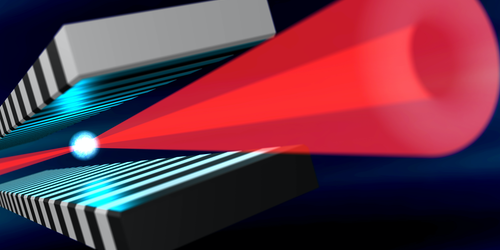Better Electron Bunches for X-Ray Lasers
To make an x-ray free-electron laser (XFEL), researchers start with an electron beam. This beam is compressed into very short bunches and directed through a series of undulators to generate x rays, which can be used to make movies of molecular phenomena (see Viewpoint: Showtime for Molecular Movies). Smoother, longer bunches produce x rays of more uniform wavelength, leading to higher resolution XFEL images, so researchers shape the electron bunches using a so-called laser heater, a device that undulates the bunch from side to side while it moves through the path of an infrared laser. Now Sergio Carbajo and colleagues at the SLAC National Accelerator Laboratory in California show that a hollow infrared laser improves a laser heater’s ability to shape electron bunches.
Without a laser heater, a FEL’s electron bunches resemble squashed basketballs. The electrons in such bunches have a small energy spread—which is the energy difference between the fastest and slowest electrons. This small spread makes the bunches susceptible to instabilities, degrading the XFEL’s coherence, spectra, and performance. Passing a bunch through a laser heater increases its energy spread by an order of magnitude, a change that causes the bunch to stretch into an American-football shape. This elongated bunch is less susceptible to instabilities. But if the infrared laser in the heater has a uniform profile, the energy change induces a less stable shape. Researchers predict that they could solve this problem by hollowing out the infrared laser’s profile. Carbajo and colleagues experimentally validate the predictions using the Linac Coherent Light Source.
Measurements suggest that better shaping of electron bunches could lead to increased energy resolution of the XFEL pulses. This increase could benefit a variety of XFEL applications, including the ability to probe excitations in novel superconductor materials.
This research is published in Physical Review Letters.
–Mordechai Rorvig
Mordechai Rorvig is a freelance writer based in Boston, Massachusetts.




